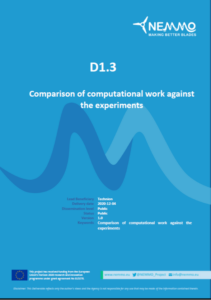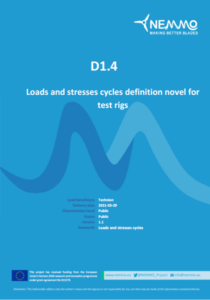Last updated: 15 November 2023
Work Package 1 “MIRACLES: LES Simulation Code for Turbine Blade Operation” aims to develop and apply a computational fluid dynamics (CFD) model for simulating tidal turbine blade cavitation in order to explore various passive and active cavitation control strategies and then consider implementing them on a full model of a multi-bladed tidal turbine.
The report “Comparison of computational work against the experiments” summarises partners’ efforts to validate the experimental work of SSPA against Technion’s computations. This work package considered a widely used open-source tool Qblade/Xfoil.
Download the full report: Deliverable 1.3
The report “Loads and stresses cycles novel definition for test rigs” summarises partners’ efforts towards the Magallanes tidal turbine performance assessment against load and stress cycles. This work package uses a widely used open-source tool Qblade.
The Magallanes blade/turbine was considered for the load/stress analysis in this work. Firstly, using the Xfoil module inside the Qblade, the coefficient of lift and drag were calculated for the range of -180o to 180o. Then, using the Qblade-Turbine BEM simulation module, the Magallanes turbine’s performance was assessed by varying the range of tidal velocity in the range of 1.45-10.5 m/s. By performance of the Magallanes turbine, we refer to the tidal turbine’s performance characteristics, viz. coefficient of power (CP), coefficient of thrust (CT), etc. With this tidal velocity range, the Magallanes tidal turbine’s structural performance was assessed using the module Q-FEM of the Qblade. The modal analysis for structural dynamics was done to predict the most influencing frequency range of vibrations during the turbine operation. Finally, using the NREL-FAST module of the Qblade, the time series for different turbulent intensities were obtained, which acted as an input parameter to assess the Magallanes tidal turbine’s life span.
The performance characteristics of Magallanes tidal turbine were primarily assessed using the extreme events of tidal velocities and the extremes of the turbulence intensities. In addition to that, a methodology was proposed from the previous literature to calculate the lifetime of the Magallanes tidal turbine, using the guidelines of DNV-GL-SE-0163 (DNVGL-SE-0163, October 2015) and DNV-GL-SE-0164 (DNVGL-ST-0164, October 2015).
In this work, different modules of the Qblade were used to obtain the different performance characteristics of the Magallanes turbine for varying tidal velocities and varying turbulent intensities. To get the lifetime of the tidal turbine for the extreme loading and fatigue events, the data from the Qblade simulations needed to be fed up with the MATLAB simulations to get the complete sense of the lifetime of the Magallanes turbine.
Download the full report: Deliverable 1.4
Learn more about CFD modelling
Learn more about cavitation testing

